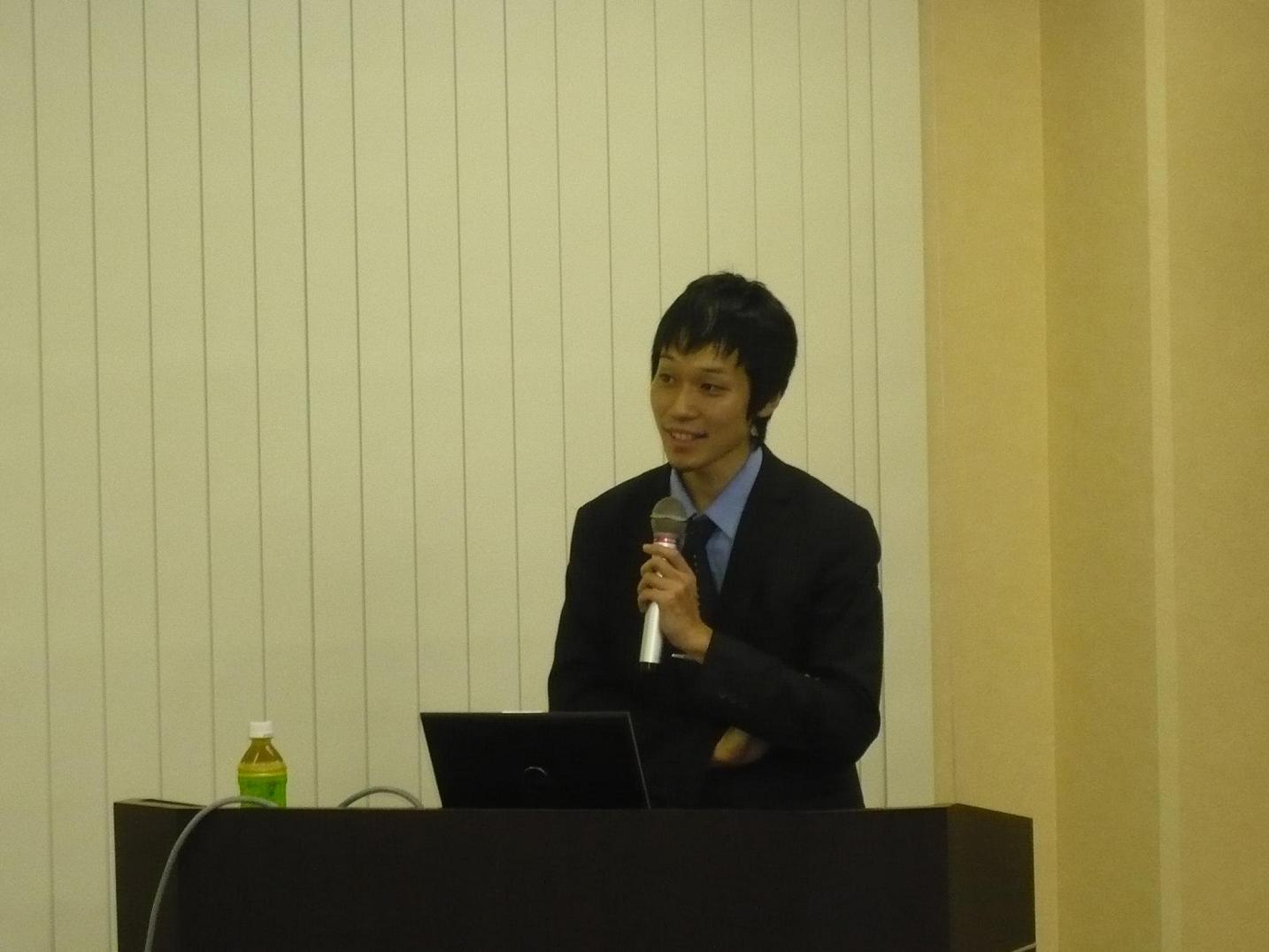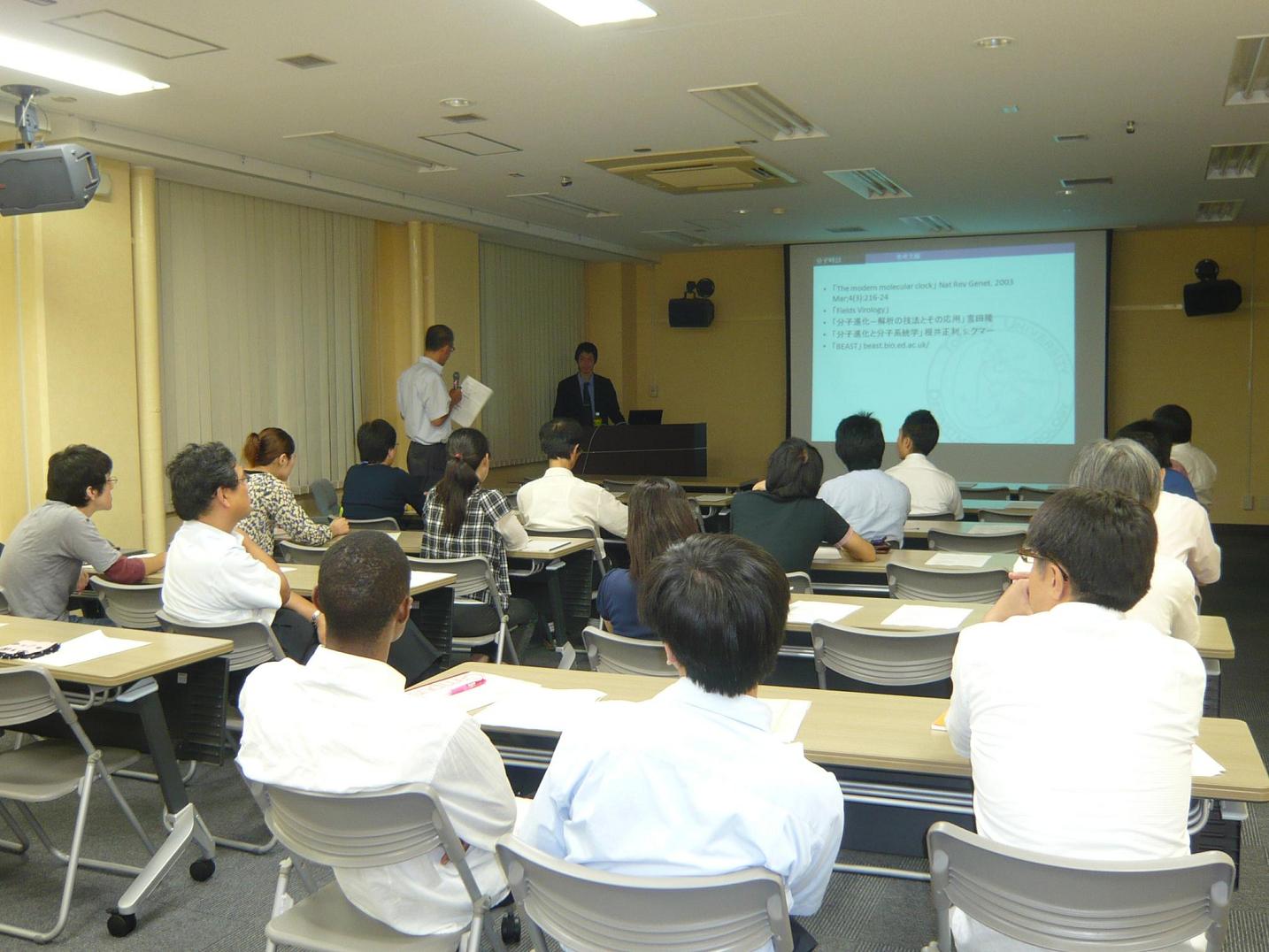Center for International Collaborative Research The Forth Seminar2009(October 1st,Thu)
 →Japanese
→Japanese
Date: Thursday,October 1st
Venue: Main Conference Room of the Research Institute of Tropical
Medicine (in Sakamoto Campus)
Topic:“Evolutionary Rate and Molecular Clock,” a biological story
respecting archaeology
Lecturer:Mr. Yuki Furuse
Doctorial Course of Tohoku University Graduate School of Medicine
Molecular phylogenetics is an academic field whose basic concept was established in the 1960s to conduct research on “evolution” as an ongoing process. The knowledge and findings resulting from such research are important for not only the natural sciences but also archaeology, and their uniqueness and creativeness can fully satisfy our intellectual curiosity. However, during its development molecular phylogenetics has been disliked by archaeologists because of its biological aspect and by experimental biologists because of the complexity of mathematical formulas used in this field and it has not been well accepted by the general public.
On this occasion, Mr. Yuki Furuse from the Doctorial Course of Tohoku University Graduate School of Medicine lectured, particular focusing on the “revolutionary rate and molecular clock” in molecular phylogenetics. The concept, “revolutionary rate and molecular clock,” enables assumption of the time point of branching of species such as “animals and plants” and “human beings and apes.” His talk included many ideas to help us understand instinctively “what we are doing” and “what can be clarified” with molecular phylogenetics without using any mathematical formulas, and showed what fields of research this concept can contribute to, for example, how it can be applied to treat pathogens such as viruses.
The word, “evolution” may be easily associated with certain images such as Darwin, natural selection theory, Out of Africa hypothesis, excavation of fossilized remains etc. On the other hand, molecular phylogenetics is also an academic field that clarifies the way (phyletic line) in which organisms have evolved by analyzing the sequences of amino acids in proteins and bases of genes, which have been related to evolution, though it may not be a familiar issue for the general public. Molecular phylogenetics enables systematic classification, assumption of the time point and the order of branching and analysis of functional regulations. This academic field can be understood as a combination of archaeology (observation-based speculation (inference, assumption and imagination)) and molecular biology (objectivity and quantitativeness). The concepts of evolutionary rate (number of substitutions of bases or amino acids per year or site) and molecular clock (the evolutionary rate is considered to be constant) are the core of molecular phylogenetics. A branching time point is assumed by calculating the genetic distance and presuming the systematic classification and the order of ramification points based on analysis of sequences of amino acids and genetic bases.
Molecular phylogenetics has clarified the origin of life, the systematic analysis of old bacteria, branching of eukaryotic organisms and prokaryotic organisms, branching of animals and plants, explosion of phylums in the Cambrian period etc. In addition, the time period of HIV or influenza virus epidemic and the degree of homology between a new type influenza virus and a seasonal influenza virus can be investigated using molecular phylogenetics.
Mr. Furuse said that it may be mathematicians who develop molecular phylogenetics but it should be biologists (including physicians) who are responsible for utilizing the tools developed by mathematicians and that “irrational rationality of mathematics to understand the universe,”a saying by Einstein, should also be applicable to biology.
More attention should be paid to the possibility of utilizing antecedent molecular phylogenetic research results for solving future (near future) problems such as coping with “new infectious diseases” and “reemerging infectious diseases.”

|


